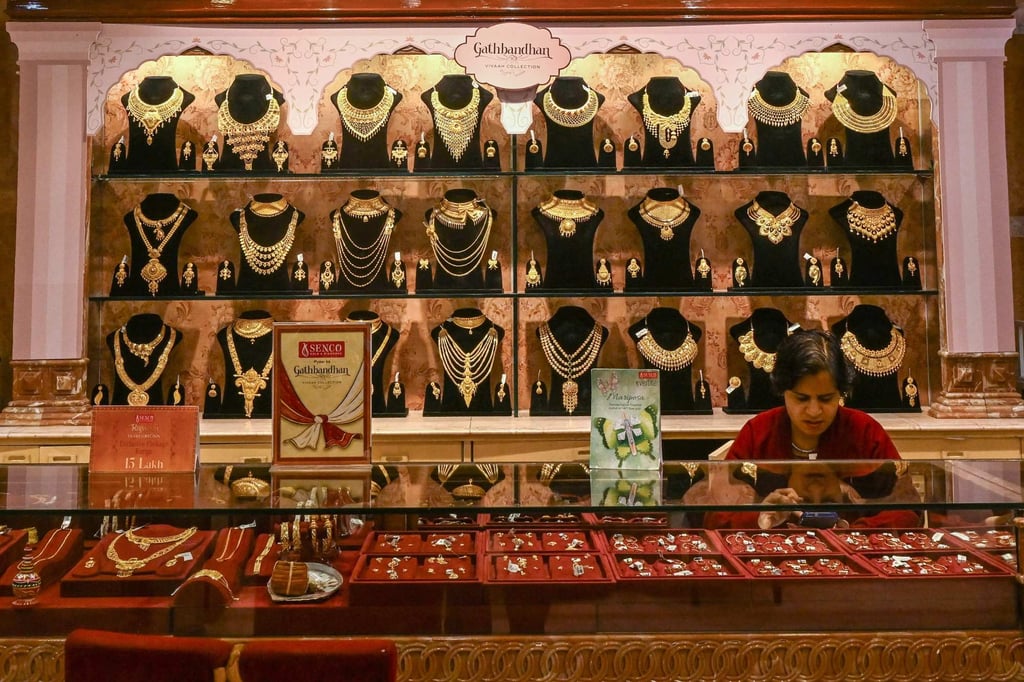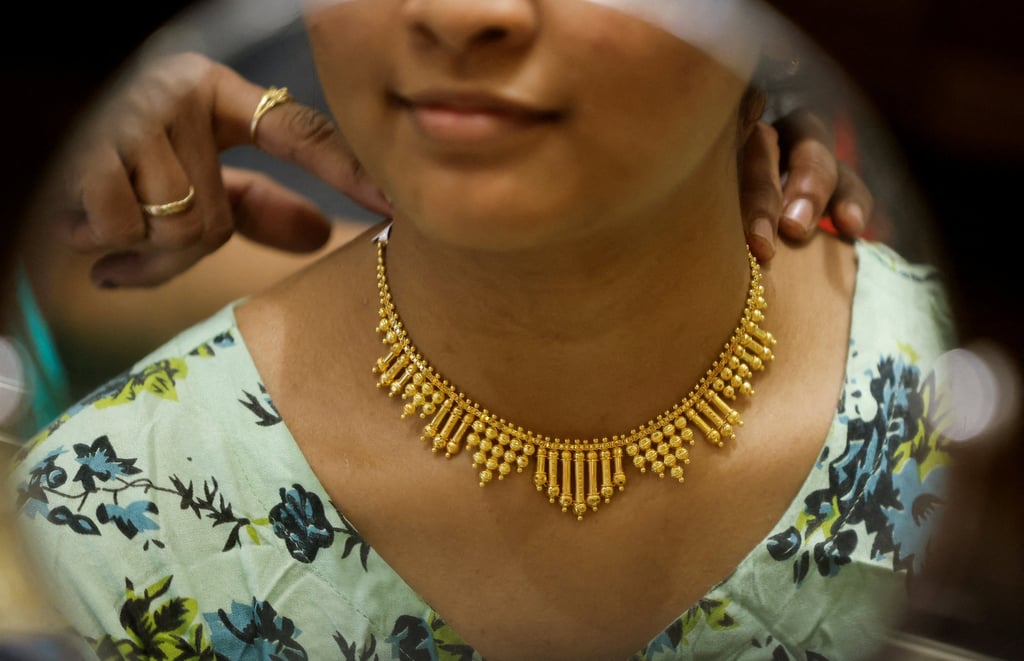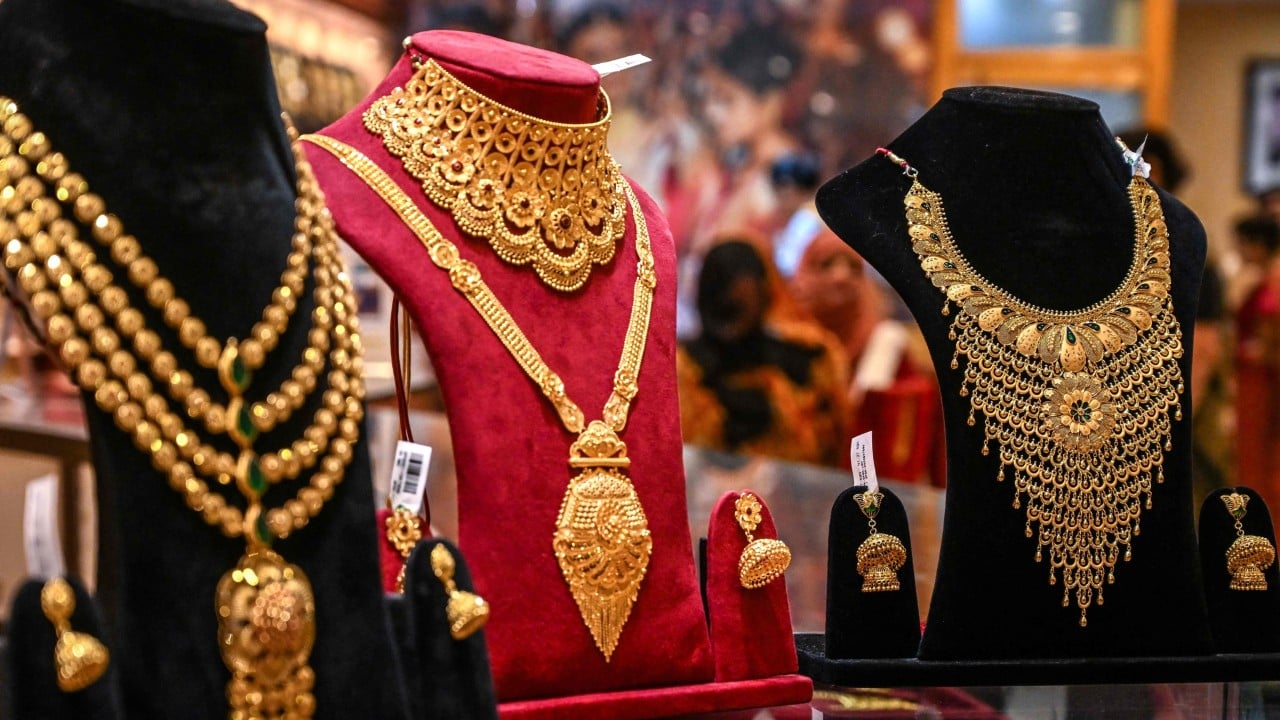For New Delhi resident Jaya Thakur, the prospect of buying gold jewellery for her son’s wedding in November kept her on tenterhooks for weeks and months as near-record-high prices of the precious metal threatened to disrupt her family’s budget.
She is thanking her stars now for not having rushed into buying, as India’s federal budget late last month slashed the import duty on gold to down to 6 per cent from 15 per cent.
“I had given only some money in advance to a jewellery shop. Now I will ask him to give me a better deal for the ornaments,” said Thakur, whose family of four lives in South Delhi’s Tughlakabad area, crammed with residential buildings overlooking narrow lanes.
India meets nearly all of its gold demand through imports, which rank second-highest in value in the country’s import bill after crude oil. The import tax was reduced to check the rampant smuggling of gold into the country, industry officials said.
Thanks to the import duty cut, gold demand in the world’s second-largest consumer India has suddenly perked up, despite instability over the recent deaths of two senior militant leaders in the Middle East stoking up international prices.

Globally, investors tend to buy into gold during times of geopolitical uncertainty as they consider gold a store of wealth. While the assassination of Hamas’ top leader Ismail Haniyeh and the strike against senior Hezbollah commander Fouad Shukur have upended attempts to defuse a Middle East powder keg, the incidents have improved the precious metal’s age-old safe-haven appeal.
International gold prices are also holding steady amid market expectations of an interest-rate cut by the US Federal Reserve that is predicted to boost liquidity. On Wednesday, the Fed kept the policy rate unchanged at 5.25 per cent to 5.5 per cent, hinting that rate cuts are likely to be dependent on economic data.
Spot gold prices held around US$2,435 per troy ounce on Thursday, just shy of the record high of US$2483.60 scaled on July 17 driven by rising geopolitical risks, expectations of bank interest rate cuts and purchases by central banks.
Prices at the start of the year were hovering just above US$2,000 a troy ounce – a unit of measurement for precious metals that is equal to 31.10 grams.
Retail gold prices in India are, however, down since the federal budget on July 23, industry executives say.
Indian spot gold prices fell by 6 per cent to 68,652 Indian rupees (US$820) per 10 grams from 72,487 rupees per 10 grams before the budget. Prices in the Indian market fluctuate in line with international prices, but the duty cut means that the local prices would still be relatively cheaper than before, irrespective of global market fluctuations.
“Retail buyers panic whenever prices rise. We are seeing a demand revival because prices in India have fallen since the budget,” said Bachhraj Bamalwa, Kolkata-based founder partner of Nemichand Bamalwa & Sons, a prominent gold jewellery retailer.

The pickup in jewellery demand has come during what is generally a dull season due to the absence of any auspicious days in the Hindu calendar, with buyers preferring to time their purchases to religious occasions.
Gold is also customarily gifted at weddings because it is believed to be lucky and serves as wealth to be passed on down generations.
Two of the world’s biggest gold consumers, India and China, share accounts for over half of the global market.
The World Gold Council’s second quarter report on Wednesday showed that the total global gold demand increased 4 per cent year on year to 1,258 tonnes, but record high prices drove down jewellery demand by 19 per cent year on year during the period.
Unlike the West, gold jewellery items in Asia are often priced close to the price of spot gold because markets are more price sensitive. Plain gold jewellery – with minimal design work – is often bought in markets like India as much for investment as for gifting.
Occasionally, higher gold prices can catalyse buying in the region when customers are certain that there is a bullish trend – a buying pattern seen in the region in early 2000 and again in China during the first half of the year, says Ross Norman, CEO of London-based Metals Daily.
“However, gold has lost momentum to the upside, so I would expect a decline in Chinese demand being offset by increases in Indian demand – on a net basis little change,” Norman added.

The pick-up in Indian demand had already resulted in a discount in local markets narrowing to US$45 per troy ounce from US$100 per troy ounce earlier, he said, adding that it was “just in time for the wedding season”.
The discounts on gold ornaments are offered on the production charges rather than the physical value of the metal that has little margin.
India celebrates about 10 million weddings per year, of which about 80 per cent are Hindu weddings. Some Hindu weddings are held between July to September, but the preferred period is between November to February.
Gold demand in India generally peaks in the fourth quarter because of weddings and the festival season such as Dussehra and Diwali.
Despite the import duty cut, some incoming cargoes have been stuck in transit as customs officials await more clarity about the new tax regime, traders say.
Gnanasekar Thiagarajan, founder of Commtrendz Research, said the import snags were not affecting gold retailers because the soaring prices of the precious metal had prompted a rush of scrap gold sales or ornaments and bullion coins owned by individuals.
He said a section of buyers in India who had bought gold before the import duty cut in anticipation that international prices would rise later this year over a possible Fed rate cut had been stung by the government’s move.
“They have felt the pinch because prices have suddenly come down,” he said.


